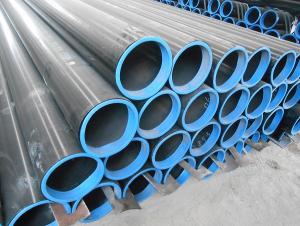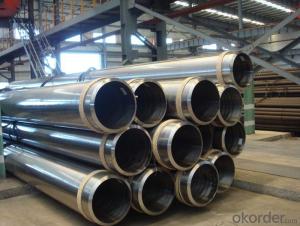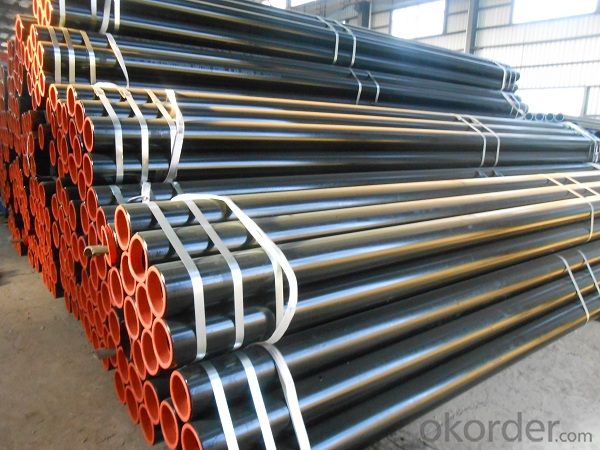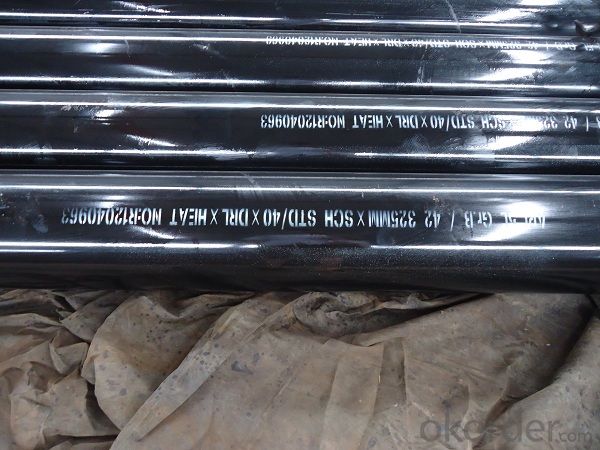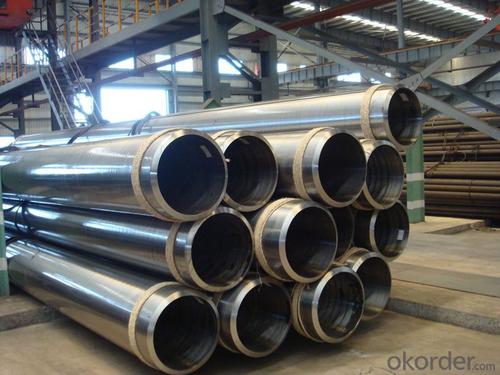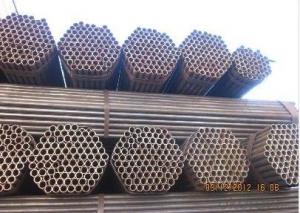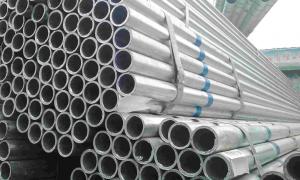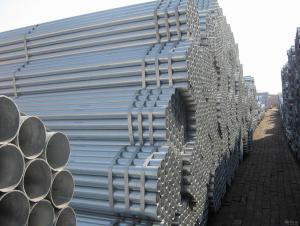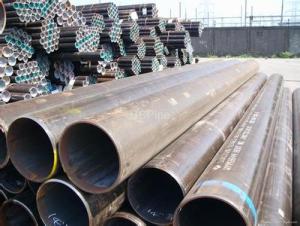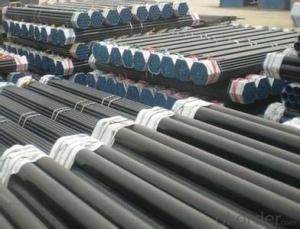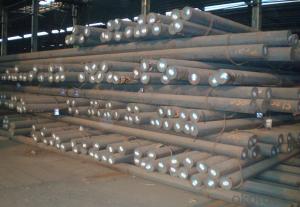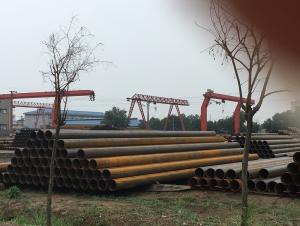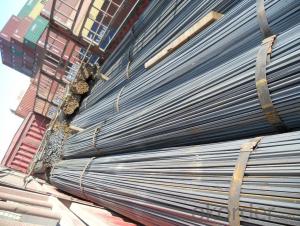Seamless steel pipe a variety of high quality q235
- Loading Port:
- Tianjin
- Payment Terms:
- TT OR LC
- Min Order Qty:
- 40 m.t.
- Supply Capability:
- 15000 m.t./month
OKorder Service Pledge
OKorder Financial Service
You Might Also Like
1、Structure of
Seamless steel pipe a variety of high quality q235
Seamless pipe is formed by drawing a solid billet over a piercing rod to create the hollow shell. As the manufacturing process does not include any welding, seamless pipes are perceived to be stronger and more reliable. Historically seamless pipe was regarded as withstanding pressure better than other types, and was often more easily available than welded pipe.
2、Main Features ofSeamless steel pipe a variety of high quality
• High manufacturing accuracy
• High strength
• Small inertia resistance
• Strong heat dissipation ability
• Good visual effect
• Reasonable price
3、Seamless steel pipe a variety of high quality q235 Specification:
Standard | GB, DIN, ASTM ASTM A106-2006, ASTM A53-2007 |
Grade | 10#-45#, 16Mn 10#, 20#, 45#, 16Mn |
Thickness | 8 - 33 mm |
Section Shape | Round |
Outer Diameter | 133 - 219 mm |
Place of Origin | Shandong, China (Mainland) |
Secondary Or Not | Non-secondary |
Application | Hydraulic Pipe |
Technique | Cold Drawn |
Certification | API |
Surface Treatment | factory state or painted black |
Special Pipe | API Pipe |
Alloy Or Not | Non-alloy |
Length | 5-12M |
Outer Diameter | 21.3-610mm |
Grade | 20#, 45#, Q345, API J55, API K55, API L80, API N80, API P110, A53B |
Standard | ASME, ASTM |
1) Material:20#(ASTM A 106/A53 GRB.API5LGRB,GB),45#,16Mn,10#.
2) Specification range:OD:21.3-610mm,WT:6-70mm,length:6-12m or according to the requirement of clients.
3) Excutive standards:GB,ASME API5L.ASTM A 106/A53,Despite of the above standards,we can also supply seamless steel pipe with standard of DIN,JIS,and so on,and also develop new products according to the requirements of our clients!
4) Surface:black lacquered,varnish coating or galvanized.
5) Ends:Beveled or square cut,plastic capped,painted.
6) Packing:bundles wrapped with strong steel strip,seaworthy packing.
4、Packaging & Delivery
Packaging Details: | seaworthy package,bundles wrapped with strong steel strip |
Delivery Detail: | 15-30days after received 30%TT |
5、FAQ of Seamless steel pipe a variety of high quality q235
①How is the quality of your products?
Our products are manufactured strictly according to national and internaional standard, and we take a test
on every pipe before delivered out. If you want see our quality certifications and all kinds of testing report, please just ask us for it.
Guaranteed: If products’ quality don’t accord to discription as we give or the promise before you place order, we promise 100% refund.
②How about price?
Yes, we are factory and be able to give you lowest price below market one, and we have a policy that “ for saving time and absolutely honest business attitude, we quote as lowest as possible for any customer, and discount can be given according to quantity”,if you like bargain and factory price is not low enough as you think, just don’t waste your time.Please trust the quotation we would give you, it is professional one.
③Why should you chose us?
Chose happens because of quality, then price, We can give you both.Additionally, we can also offer professional products inquiry, products knowledge train(for agents), smooth goods delivery, exellent customer solution proposals.Our service formula: good quality+good price+good service=customer’s trust
SGS test is available, customer inspection before shipping is welcome, third party inspection is no problem.
6、Seamless steel pipe a variety of high quality Images:
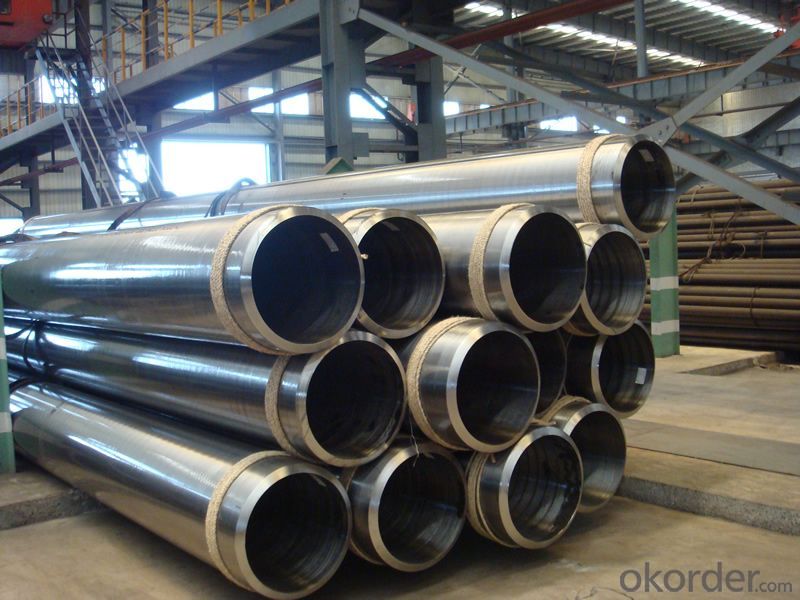
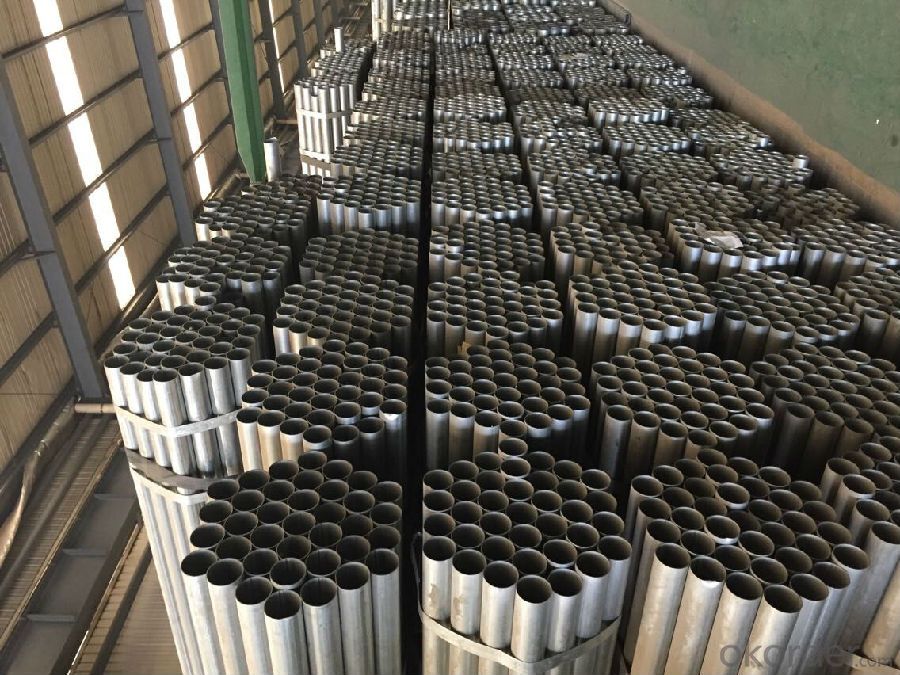
- Q: How are steel pipes used in mining?
- Steel pipes are extensively used in mining for various purposes, such as transporting fluids, ventilation systems, and structural support. They are commonly employed for carrying water, slurry, or other liquids to different parts of the mine. Additionally, steel pipes are utilized for creating ventilation systems to ensure fresh air supply and remove harmful gases from underground mining operations. Moreover, they provide crucial structural support for tunnels, shafts, and other mining infrastructure due to their strength and durability.
- Q: Can steel pipes be used for wastewater systems?
- Yes, steel pipes can be used for wastewater systems. Steel pipes have been widely used in wastewater systems due to their durability, strength, and resistance to corrosion. They are capable of withstanding high pressure and can effectively carry and transport wastewater over long distances. Additionally, steel pipes can be easily welded, allowing for the creation of a seamless pipeline system that minimizes the risk of leakage. Moreover, steel pipes are environmentally friendly as they can be recycled, making them a sustainable choice for wastewater systems. However, it is important to consider the specific requirements of the wastewater system and consult with experts to determine the most suitable material for the project.
- Q: Can steel pipes be used for brewery installations?
- Indeed, brewery installations can utilize steel pipes. Within breweries, steel pipes are frequently employed for a multitude of purposes, including fluid transfer, equipment interconnection, and plumbing system establishment. Steel pipes boast exceptional durability, strength, and resistance to corrosion, rendering them apt for handling the challenging conditions and high-pressure environments typically encountered in brewery installations. Moreover, the ability to weld steel pipes together enables seamless connections, guaranteeing a dependable and leakage-free operation. Nevertheless, it remains crucial to ensure that the steel pipes employed in brewery installations comply with the requisite standards and regulations, thereby safeguarding the safety and quality of the beer production process.
- Q: What are the different methods of measuring the thickness of steel pipes?
- There are several methods of measuring the thickness of steel pipes, including ultrasonic testing, magnetic particle testing, eddy current testing, and laser scanning.
- Q: How do steel pipes handle seismic expansion joints?
- Steel pipes handle seismic expansion joints by allowing for movement and flexibility. These pipes are designed to withstand the forces caused by seismic activity, such as earthquakes, by accommodating expansion and contraction without causing damage to the overall structure. The joints in steel pipes are often equipped with specialized components, such as bellows or flexible couplings, that can absorb the movement and prevent excessive stress on the pipeline. This ensures the integrity and safety of the pipeline system during seismic events.
- Q: How do steel pipes handle high-velocity flow?
- Steel pipes are designed to handle high-velocity flow efficiently due to their inherent strength and durability. The smooth interior surface of steel pipes minimizes friction, allowing for smooth flow and reducing energy loss. Additionally, the sturdy construction of steel pipes enables them to withstand the pressures and forces exerted by high-velocity flow without deformation or failure.
- Q: What is the outer diameter and wall thickness of DN40 steel pipe?
- DN40, refers to the diameter of 40mm, that is, an inch and a half, there are welded pipe and galvanized pipe,Ordinary wall thickness 3.5mm wt 3.84kg/mThicken 4.25mm weight 4.58kg/m
- Q: How are steel pipes used in plumbing systems?
- Steel pipes are commonly used in plumbing systems due to their durability and strength. They are typically used for water supply lines, sewage lines, and gas lines. Steel pipes are resistant to corrosion, making them a reliable choice for long-term use. They are often used in high-pressure systems and are known for their ability to withstand extreme temperatures. Additionally, steel pipes are easily accessible and cost-effective, making them a popular choice in plumbing installations.
- Q: What is the difference between API 5L and ASTM A106 steel pipes?
- Seamless carbon steel pipe is commonly specified under two widely used specifications: API 5L and ASTM A106. These specifications cover similar materials but have different criteria in terms of chemical composition, manufacturing processes, mechanical properties, and testing. API 5L, created by the American Petroleum Institute (API), is designed for line pipe used in oil and gas transportation. It applies to both seamless and welded steel pipes suitable for conveying gas, water, and oil in the natural gas and petroleum industries. API 5L outlines the minimum requirements for manufacturing two product specification levels (PSL 1 and PSL 2) of seamless and welded steel pipes, which have varying chemical composition and mechanical properties. In contrast, ASTM A106, developed by the American Society for Testing and Materials (ASTM), is specifically for seamless carbon steel pipe used in high-temperature service. It covers seamless carbon steel pipe with nominal wall thickness as specified in ANSI B36.10, ranging from NPS 1/8" to NPS 48". ASTM A106 provides guidelines for chemical composition, manufacturing processes, mechanical properties, and testing. A significant distinction between API 5L and ASTM A106 lies in the intended application of the pipe. API 5L is designed for the transmission of liquid and gas, while ASTM A106 is used in high-temperature service. Moreover, the chemical composition and mechanical properties of the steel may differ between the two specifications depending on the grade and type of steel being utilized. To summarize, API 5L and ASTM A106 are extensively used specifications for carbon steel pipe, but they exhibit notable differences in terms of their application, chemical composition, manufacturing processes, mechanical properties, and testing requirements. It is crucial to carefully consider these factors when selecting the appropriate steel pipe for a specific application.
- Q: What are the advantages of using steel pipes over other materials like PVC or copper?
- There are several advantages of using steel pipes over other materials like PVC or copper. Firstly, steel pipes are incredibly durable and can withstand high pressure and extreme temperatures, making them suitable for various industrial applications. They are also resistant to corrosion, ensuring a longer lifespan compared to PVC or copper pipes. Additionally, steel pipes have excellent structural strength, providing enhanced stability and safety. They are also environmentally friendly as they can be recycled, reducing their impact on the environment. Overall, steel pipes offer superior strength, longevity, and reliability, making them a preferred choice for many industries.
Send your message to us
Seamless steel pipe a variety of high quality q235
- Loading Port:
- Tianjin
- Payment Terms:
- TT OR LC
- Min Order Qty:
- 40 m.t.
- Supply Capability:
- 15000 m.t./month
OKorder Service Pledge
OKorder Financial Service
Similar products
Hot products
Hot Searches
Related keywords
